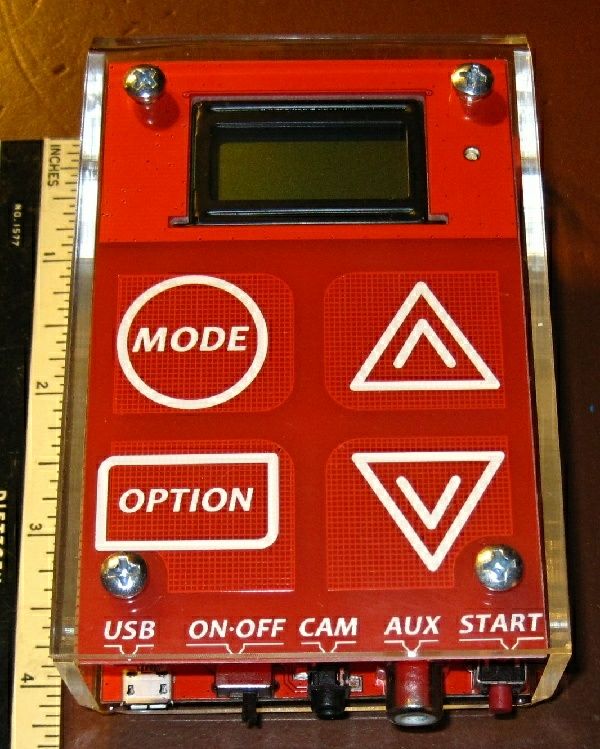

While blissfully happy with my Triggertrap Arduino shield, in July 2013 they ran a sale offering the stand-alone "Triggertrap v1"for $75 (50£). I couldn't resist that so I ordered one and it arrived from the UK 11 days later. Included in the package was an adapter for converting a 2.5mm stereo plug to 1/8". Canon cameras use the 2.5 mm size (3/32"). No cable is included.
My first surprise was the size of the Triggertrap. It is 4¼" x 2¾" x 1½", somehow I expected it to be smaller. With three AA batteries inside it's a hefty eight ounces. To install the batteries you must remove four screws from the front cover and separate it from the back. The case consists of an L-shaped piece of plexiglass for the front with a U-shaped piece for the back. If you follow my explanation, that adds up to five sides... and that is correct. While pretty tightly protected on five sides the bottom is wide open for access to an array of connectors.

| 
|

|
What I thought were membrane switchs on the front cover are not that at all. There is a circuit board beneath the solid plexiglass front that magically senses the presence of finger touches. This looks pretty darn rugged!
There aren't many chips on the circuit board, in fact I only saw four (two on the bottom, one on the top, and one behind the switch panel).

When powered up I was reassured to see the same version of software indicated as the one I downloaded for my shield; just as promised. But I was surprised to see the LCD display was sluggish and pale. As described in the on-line docs, the display goes blank as soon as you click "Start", to save power.
 Using on-board batteries |
 Using USB power |
When I plugged in the USB cable to supply power (by the way, it uses an unusual micro format USB connector, the same one used for the Raspberry Pi) and turned off the battery "On-Off" switch I was rewarded with the same snappy high contrast display I have on my shield. The shield is powered by AAA batteries yielding 7.2 volts, higher than the 4.5 volts provided by the 3 AA's in the Triggertrap.
So in that respect at least, the shield is preferable to this Triggertrap. I also enjoy not having the screen go blank when I hit "Start". One feature the Triggertrap has that the shield lacks is a bright LED which flashes when it triggers. I was able to add an LED to my shield and I find it extremely useful to know when triggering occurs.